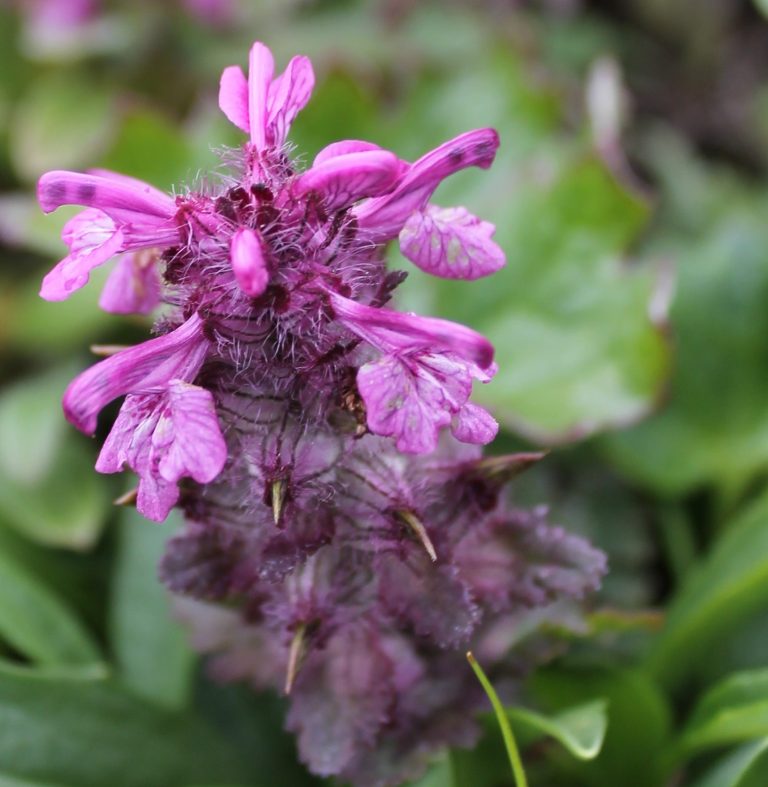Chukchi: рорагтыт (roragtyt)
Naukan: со̄ӷра̄хты (suaghraagte)
Russian: мытник (mytnik)
English: lousewort
Naukan:
Children (and sometimes adults) gather the flowers on the tundra and eat them plain for a sweet snack. A few elders recalled that the root of this species was formerly gathered in the spring or fall, to store in fat. It has a sweet taste. One elder said the flowers can be fermented with Rhodiola, but this seems to be influence from Chukchi traditions.
Дети (и иногда взрослые) собирают цветы в тундре и едят их просто так в качестве сладкого перекуса. Некоторые старики вспомнили, что корень этого растения раньше собирали весной или осенью, и хранили в жире. На вкус он тоже сладкий. Один из наших собеседников сказал, что цветы этого растения можно ферментировать вместе с родиолой, но скорее всего это влияние чукотской традиции.
Chukchi:
The flowers are eaten plain, especially by children. Some people also add the flowers to fermenting Rhodiola for seasoning.
Цветы едят свежими, особенно их любят дети. Некоторые также добавляют цветы в юңъэв (квашеные листья и стебли родиолы) как приправу. В Энурмино иногда добавляют цветочные верхушки к ыпатын, смеси вареной ивы и листьев крестовника (Senecio congestus), которые можно хранить во влажном виде, а затем замораживать на зиму. Другие говорят, что целые цветочные верхушки можно добавлять в вареное мясо.
Central Alaskan Yup’ik:
These are not currently the most popular of edible plants in the Central Yup’ik region. However, there is reference to their use in the literature. Griffin (2001) states that people on Nunivak Island would sometimes suck the sweet nectar from the flowers of Pedicularis verticillata. Ager and Ager (1980) report that people on Nelson Island harvested the root of species in this genus in the spring and ate them raw with seal oil.



